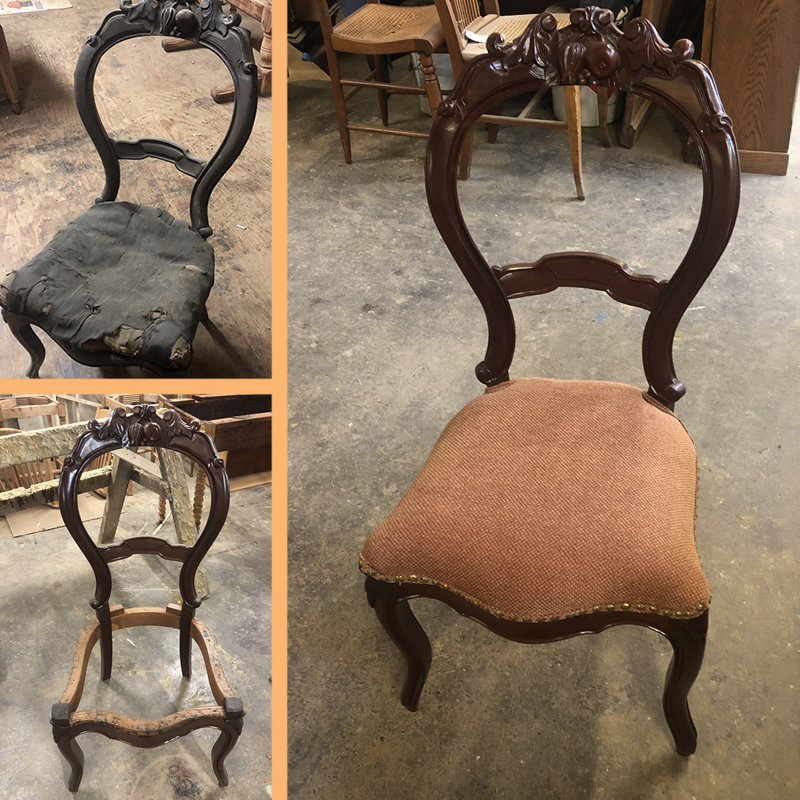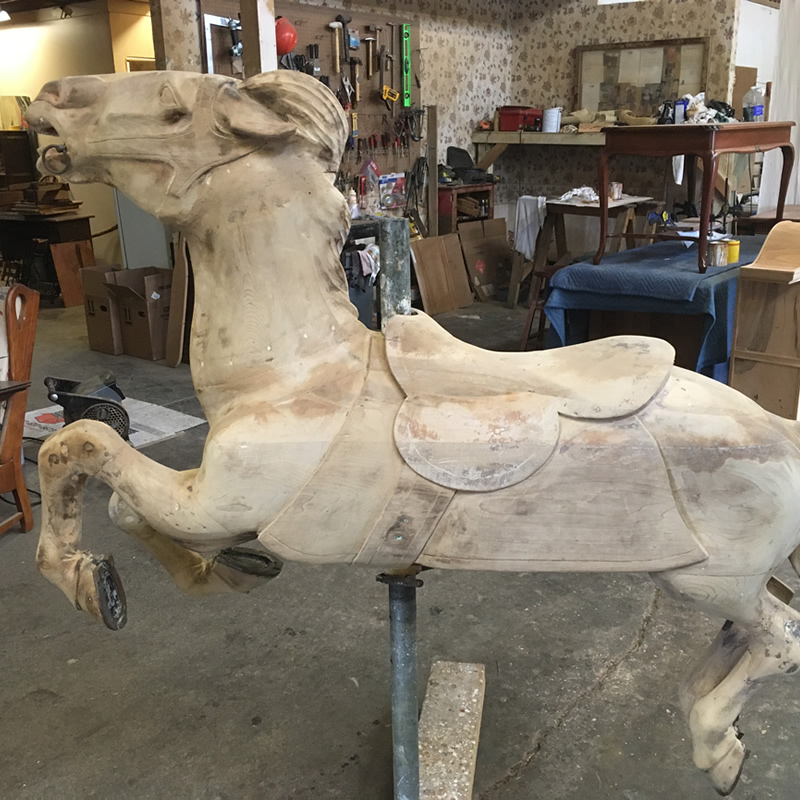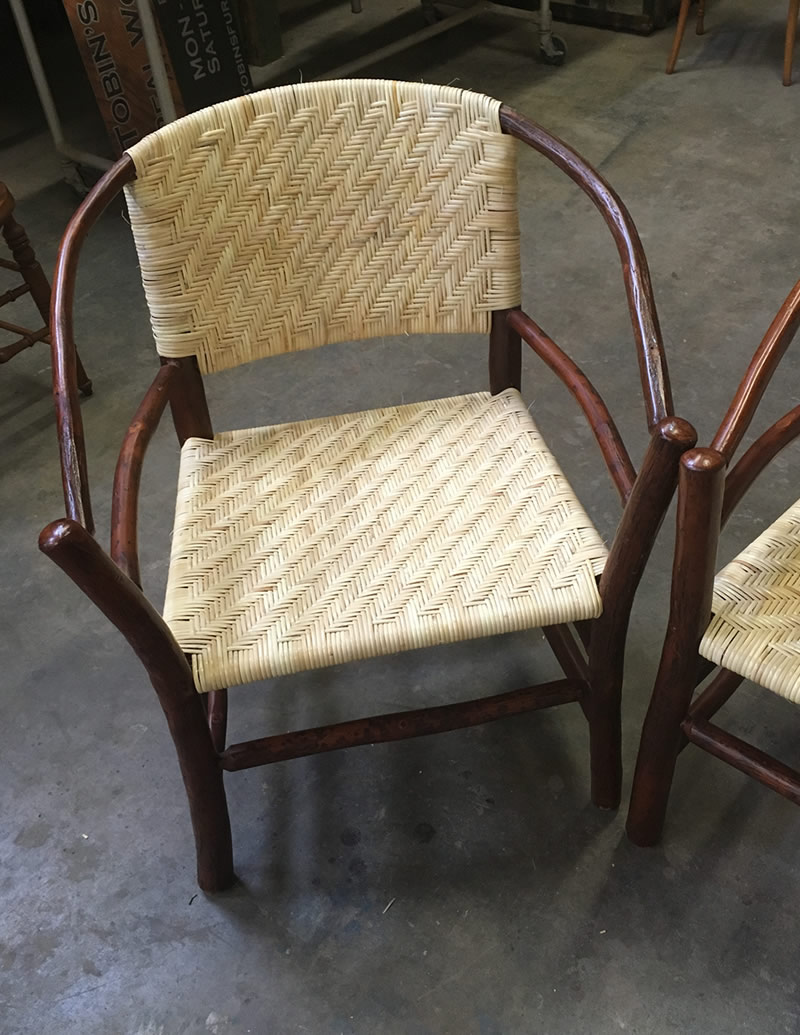
Refinishing, Restoration & Repair

Repair
Care Counts
WWe use all the latest adhesives and techniques, but resourcefulness and experience make all the difference. No one repair is ever the same, from a simple re-glue to a rebuild, or a duplication, each job must be done right, and made to last. From a broken dresser drawer guide to a complete re-veneer of a century old church door, our repairs are guaranteed to last. Broken and missing pieces can be reproduced in every detail, offering near invisible repairs.

The Stripping Process
Modern and Safe
Years ago, furniture and wood stripping was done using caustic soda (lye) in a method called dip-stripping. A piece would be completely submerged in a tank full of lye, which adversely affected a piece. This process dissolved glue, loosened joints, and delaminated wood veneer. While solvent-based strippers are used in the process today, completely submerging a piece may still expose it to possible damages.
At Tobin’s Refinishing, we prefer to use the flow-over method of wood stripping in lieu of dip-stripping. In our preferred method, a piece of furniture is placed in our custom-made 12’ long stainless steel stripping tray. Then, a solvent stripper is delivered through a tube to a hollow brush and applied to the surface of the piece of furniture. The stripper is pumped through the tube using a low-pressure pump. This method allows the operator to apply the stripper in a controlled manner, gently sloughing off layers of wood finish. It is efficient and prevents exposing the piece of furniture to possible joint and veneer damage.
Additionally, we use a closed-loop system for the solvent stripper used in the flow-over method. This recycling process allows us to clean and reuse the stripper. The used stripper goes through an internal filtration process. It filters out impurities, leaving clean stripper to be used again. Less waste is generated with this process. Any leftover waste is disposed of using approved commercial hazardous waste treatment, storage and disposal facilities.
At times, we do employ a hand stripping method. We elect to use hand stripping from time to time when working on an extremely fragile or delicate piece. This method requires solvent stripper in paste form. It is applied with a brush, left to sit for a short time, and removed with a gentle scraping motion.

Sanding
It's All in the Details
Sanding the wood after stripping is where the finishing process really begins. The quality of the finish is only as good as the quality of the prep work! The more time and effort put into preparation, the better the finished piece. 75% of the time spent restoring a piece is spent on prepping before finishing. Our sanders employ a combination of modern power tools and good old fashion hand rubbing, to achieve the smoothest surface possible. This is the point in the process where nicks, gouges, scratches, and liquid damage all must be addressed. Working through a progression of different “grits” of sandpaper, a piece of furniture will go through as many 5 separate sandings to achieve a proper surface. The quality of the finish starts with the attention to detail from the very first step!

Finishing
Time Tested Methods
After all the prep work is done, it is time to begin the finishing process. There are two reasons to finish wood: to protect it and to bring out the beauty. Stains help bring out the beauty and finishes such as lacquers, varnishes, urethanes or paints protect the wood.
Staining by hand with high quality stains and hand-wiping gives unmatched clarity and brings out the natural wood grain. Proper application of stain and knowing how much grain to open and close can make or break a job before finish is ever applied. Many factors create the wood tone and hue that make up the overall impression of color. Species, grain, age and lighting are some of the variables that affect your perception of color. Custom finishing builds color from background to final shade in stages. Having an item that is the color you want to match against will bring the best results
From paint to clear, satin to gloss or flat, it takes a special person to be a finisher. Why would anyone put on an absolutely perfect coat of finish only take about half of it off, then do it again and again and again? Hand rubbed finishing creates depth and clarity and brings out the true beauty of wood. There are few places left that still use the old ways.
Combining modern finishes with high solid content lacquers, shellacs, varnishes, and old-fashioned hard work, Tobin's can do it all. Very few manufacturers do hand rubbing. The ones that do are well-known and charge a premium for the quality finish. Because Tobin's does custom finishing, we can apply damage-resistant finishes and still use hand rubbing techniques.

Caning
Art and Craftsmanship
Caned chairs are not only nice to look at, they are also very comfortable to sit in as well. There are many different styles and types of materials that fall in the category of caning; hole cane, pressed cane, fiber rush, danish chord, binder cane and splint. Unfortunately, they do wear out in time and require replacement of the cane. With typical use, a well caned chair should provide 20+ years of use.
The art of caning takes years to learn and a lifetime to master the various materials and patterns. We offer a complete line of caning replacement, second to none! In addition, we also have a full line of materials and supplies for those who are interested in doing it themselves.

